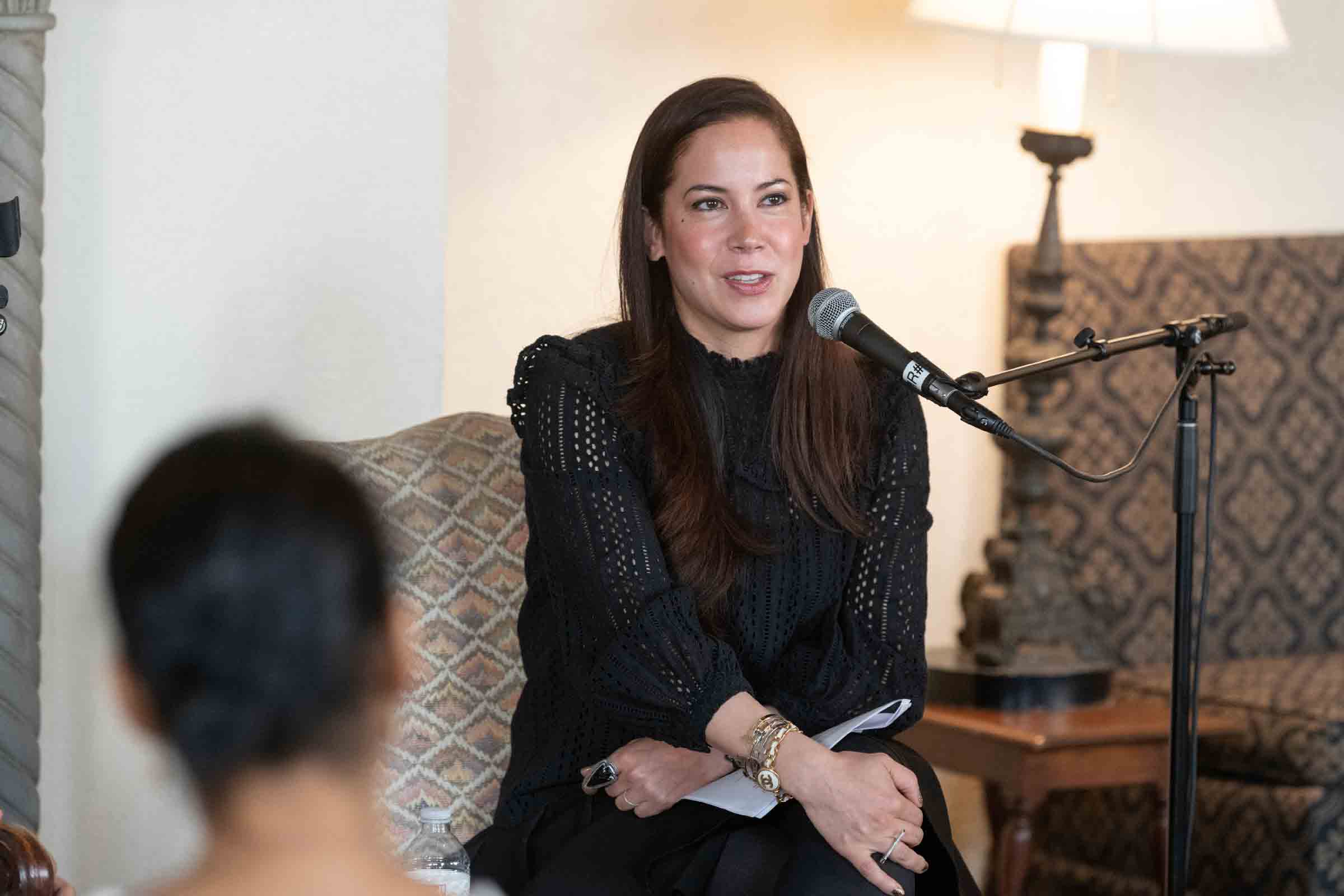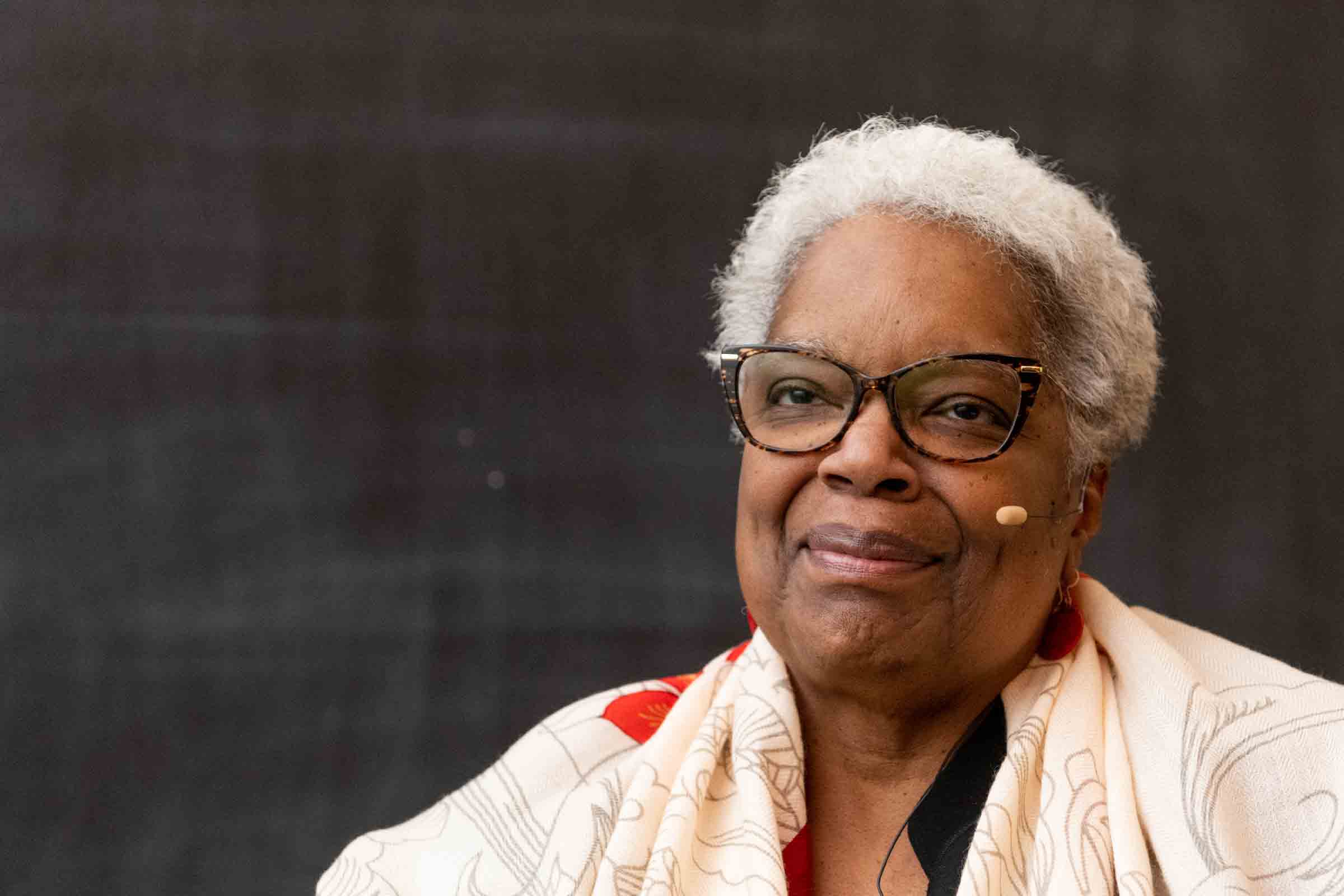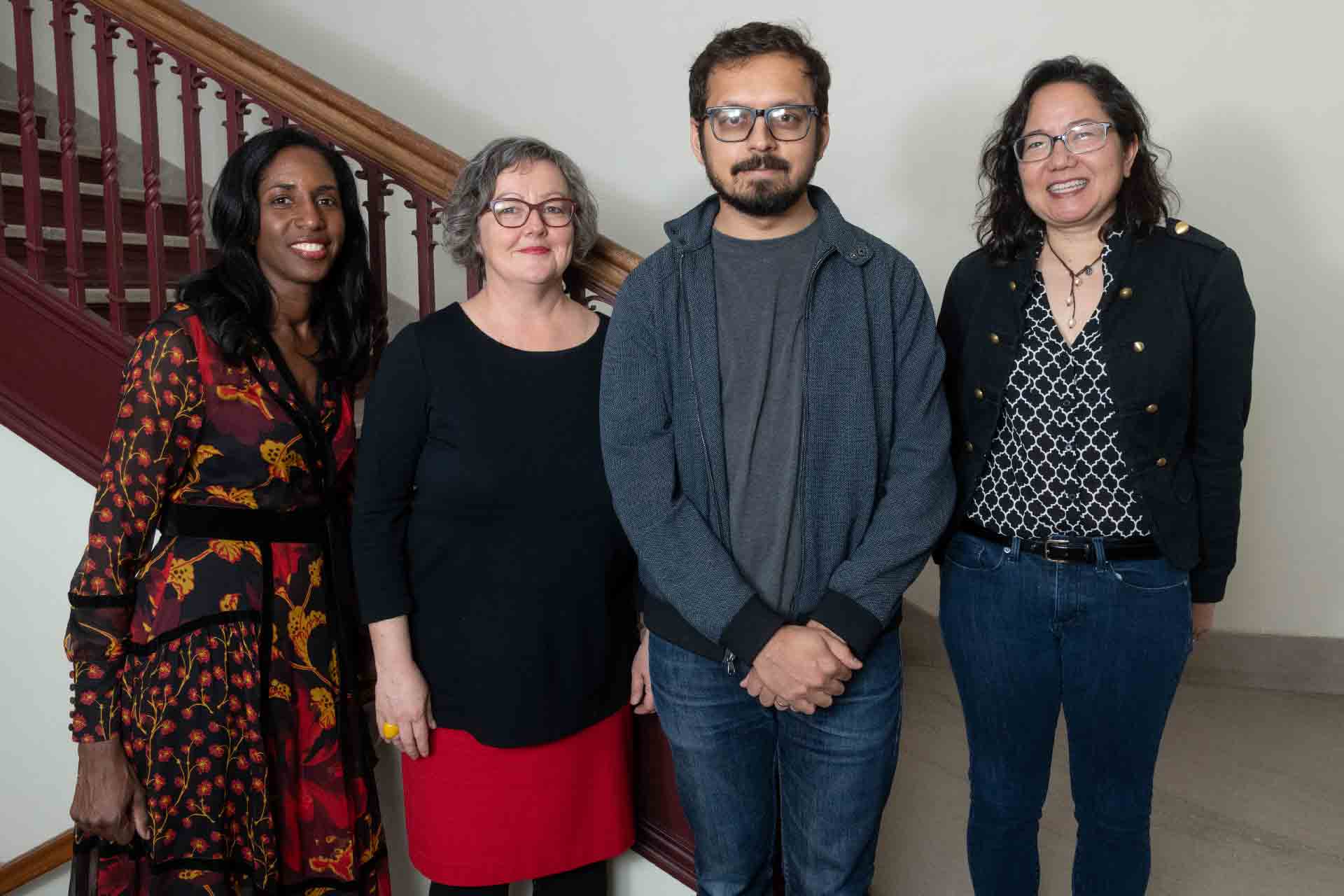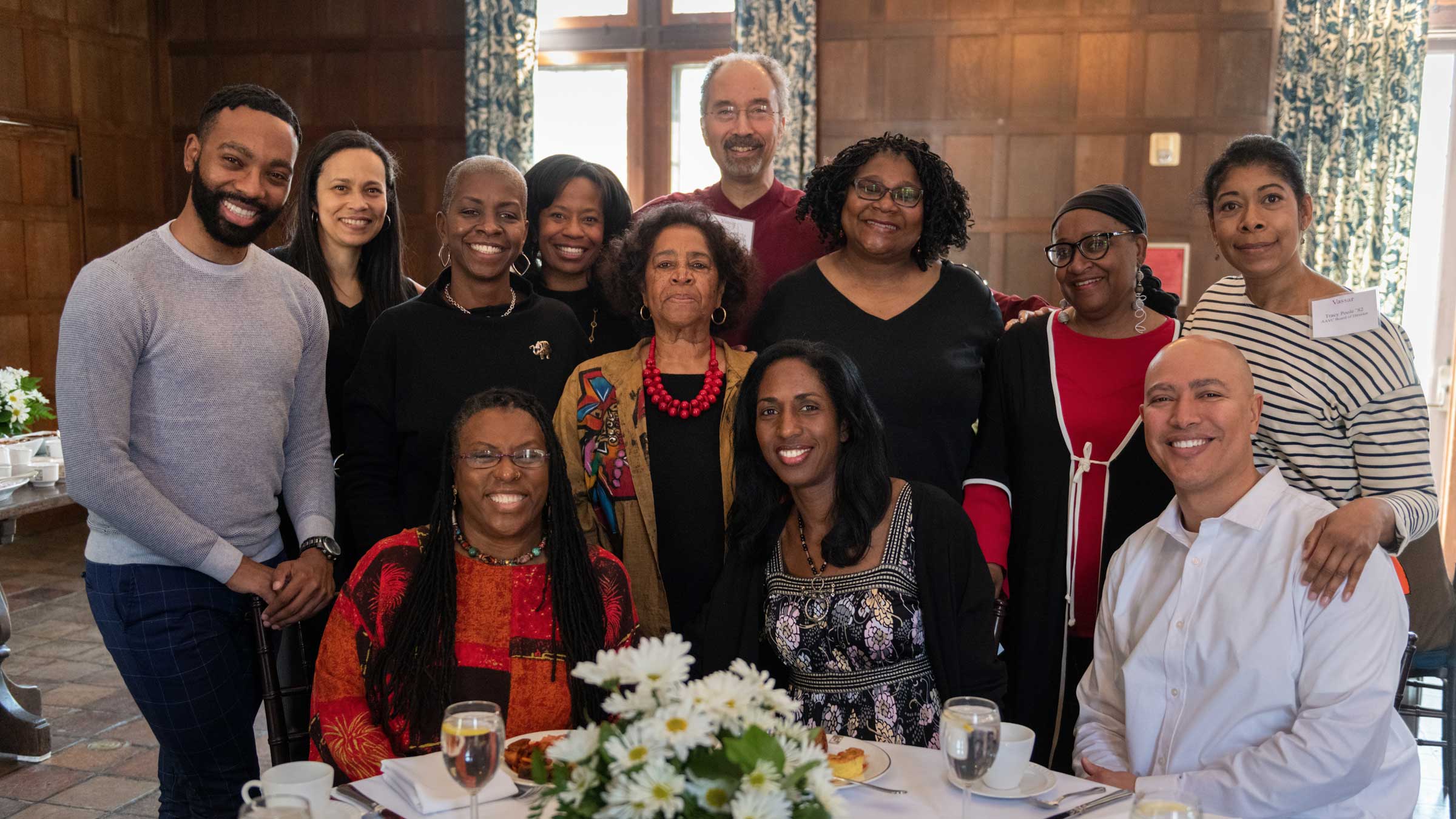A scandal that drew nationwide headlines more than a century ago served as the backdrop for “Quiet as It’s Kept: Passing Subjects, Contested Identities,” a scholarly conference on “passing,” held April 5–7 on the Vassar College campus. Those who attended and participated in the event say it advanced the dialog about racial, ethnic, and gender identity in substantial ways.
The conference was inspired by the early life of Anita Hemmings, an African American student who passed for white at Vassar until her roommate discovered her secret just before graduation in 1897. A major motion picture based on the historical novel The Gilded Years by Vassar alumna Karin Tanabe ’02 is tentatively scheduled to be released in 2021. Reese Witherspoon and the actress Zendaya, who will also play the leading role, are producing the film.
Tanabe said the popularity of her novel, and the fact that it will soon be the basis of a mainstream movie, indicate that the issues raised in her work of historical fiction are as relevant today as they were in Hemmings’s time. “Our struggles with race and immigration and homophobia continue—it’s not an ‘old’ topic at all,” she said.

The three-day event drew scholars from across the country to examine the practice of passing and other aspects of racial, ethnic, and gender ambiguity from numerous perspectives. During one panel discussion, nationally renowned African American and Native American historian Arica Coleman recalled a debate that had taken place in 2000 when “Mixed” was being considered as one of the categories a respondent could choose for his or her race on the U.S. Census. “The answer was, ‘Yes, the census should have such a category,’” Coleman said, “and every one of us should check that box.”
Professor of Film Mia Mask, who organized the event with Associate Professor of English Hiram Perez, called Coleman’s observation “a major takeaway from this conference. Arica was debunking the notion that there are actual biological racial categories. Even the discourse of being ‘mixed’ is problematic. The notion of being ‘mixed’ implies racial purity exists somewhere. Nobody is ‘pure.’”
Coleman and others taking part in the conference contended that racial minorities have resorted to passing as a logical response to the systemic racism that has infused American laws and culture. In her keynote address, Ann duCille, noted author and Visiting Professor of Gender Studies at Brown University, said the questioning of identity is quite the rage these days. She noted that Democratic presidential candidates Kamala Harris (daughter of a Tamil mother and a black Jamaican father proudly descended from white slaveholders) and Elizabeth Warren (who contended she was part Native American) have drawn criticism for their claims.

In the real world, duCille said, it’s how one’s race is interpreted that counts. “It would be hard,” she said, “to tell Trayvon Martin or Sandra Bland that race is a social construct.” (Martin was a young black man shot and killed by George Zimmerman, a mixed-race man who told 911 operators that Martin looked like “he was up to no good,” and Bland was a black woman arrested after a contentious traffic stop who was later found dead, hanging in her cell.) When it comes to race, it’s “the lived experiences of real bodies that matter,” duCille noted.
Manan Desai, Assistant Professor in the Department of American Culture and Asian/Pacific Islander American Studies at the University of Michigan, opened the first session, “Celebrity, Gossip, and Passing,” with a talk on the life of John Roland Redd, a black man born in St. Louis who passed himself off as “Korla Pandit,” the son of wealthy East Indian parents. Pandit, a pianist and composer, starred in a successful television show in Los Angeles in the 1950s and became nationally known as a charismatic and talented musician from “the mysterious East who grew up in the Jim Crow era and used a turban to escape the color line.”
Another panelist, Susan Courtney, Professor of Film and Media Studies at the University of South Carolina, debunked the often-repeated myth that “race doesn’t matter” and, by extension, that passing is no longer necessary or desirable, by noting that neighborhoods and school districts remain segregated today. “The country still suffers from amnesia of its apartheid past,” Courtney said. She spoke about the pervasiveness of structural racism in government, displaying data and written policies from federal housing agencies that alluded to the exclusion of blacks from many neighborhoods.

In her paper, “Black Indians, Race and Passing: Beyond Black and White,” Coleman noted that government record keepers were consistently inconsistent about how they classified Native Americans: Sometimes individuals were considered white and other times black. She said she also objected to the term “full-blooded.” Such a term, Coleman said, “implies there’s something different about white blood or black blood or Native American blood, and there is not. But the laws on marriage [anti-miscegenation laws] compelled this artifice; it’s not biology, it’s politics.”
Stanford University Associate Professor of American History Allyson Hobbs, a nationally known scholar on the subject of passing, noted that the practice became widespread in the United States as black families moved from the rural south to northern cities. Many who could pass for white did so, Hobbs said, largely for economic reasons. “There was quite a bit of ‘9-to-5’ passing, working white and living black,” she said, “and there was a certain pleasure gained out of ‘fooling the white folk.’”
But while passing afforded some black families economic and social rewards, it often came with a price—the loss of family ties and identity. “The light of freedom was often overshadowed by the darkness of loss,” Hobbs said.

As part of the conference, there were also screenings of two films: Little White Lie, by director Lacey Delgado, which uncovers family secrets to explain the presence of a brown-skinned woman in a Jewish family, and Fuori / Outside, directed by Kym L. Ragusa, in which a woman of African American and Italian descent examines her relationship with her Italian American grandmother.
The conference concluded with a conversation at the Alumnae House featuring Tanabe and Vassar Professor Emerita of English and Africana Studies Joyce Bickerstaff, who has been conducting research on Anita Hemmings’s family for the past 30 years. Bickerstaff said she had intended to write a comprehensive book about the Hemmings family, but decided against it after surviving family members asked her not to delve into their family history. She scaled back the scope of her work, deciding to concentrate on Hemmings’s relationship with the college.
Like other researchers who have pored over government documents concerning race, Bickerstaff called her findings “schizophrenic.” For example, Anita Hemmings’s birth certificate classifies her as white. Her brother Arthur’s birth certificate classifies him as white, but his marriage license indicates that he was “colored.” Anita’s brother Frederick is listed as white on his birth certificate and colored on his death certificate, while her brother Robert is classified as colored on both his birth and death certificates.

Tanabe told those gathered at the Alumnae House that the genesis for her book began in an unlikely way. In 2014—12 years after she graduated from Vassar—Tanabe was sorting through a stack of magazines, when she found some editions of Vassar Quarterly that had been sent to her parents when she was a student. “And there, on the cover of one of them, was this beautiful woman,” she said. Tanabe read the article and learned about Hemmings for the first time. A Google search yielded just one other article on Hemmings, Tanabe said, “and I realized this was a mystery I wanted to solve.” Her research took her back to the Vassar campus to scour the college’s archives. She found letters and other documents and slowly put together some pieces of the puzzle.
Tanabe said she vowed at the outset of her research to remain as true to the real story as she could “and then filled in the gaps with fiction. I came to admire Anita greatly and wanted to do her justice.”
Tanabe, who attended the entire conference, said she was “blown away” by the work of the scholars on the panel. “They created a narrative about passing in ways I had never thought about before,” she said.
Hobbs, the Stanford University historian, said she was honored to have been a participant at the conference. “It was a truly extraordinary experience meeting scholars across many disciplines,” she said. “I gained a deeper understanding as we advanced the conversation on this topic, and the conference was beautifully organized by Mia Mask and Hiram Perez.”
Mask, who moderated a discussion about the films, said one of the highlights of the conference for her was seeing how much the participants enjoyed exchanging ideas with each other. She said she received messages throughout the weekend from students, faculty, and former faculty members telling her how much they were enjoying it. “This tells me we did something that was academically rigorous but also enriching and informative,” she said.

The success of the event has spurred Mask to consider convening another conference after the movie is released, and she thanked Vassar President Elizabeth Bradley for providing encouragement and financial support for the first one. “President Bradley made this happen through her leadership from the time [Hiram Perez] and I presented the idea to her,” Mask said.
Perez echoed Mask’s sentiments. “One thing I could not have predicted in planning the conference was the enjoyment of the speakers as they engaged with each other’s presentations,” he said. “They expressed such genuine excitement about each other’s research. The enthusiasm came through in the panels and provided such a wonderful example of what interdisciplinarity can look like at its best and what it can accomplish.”
